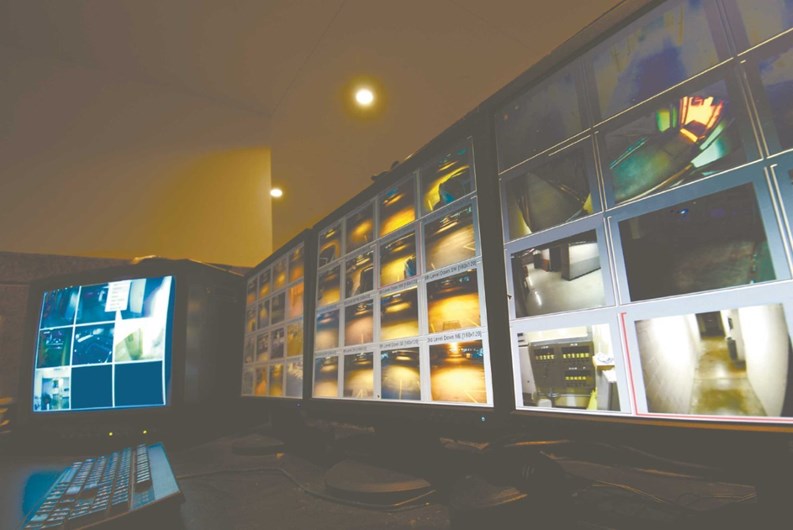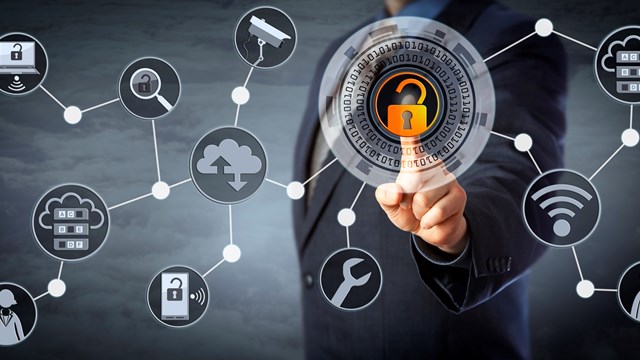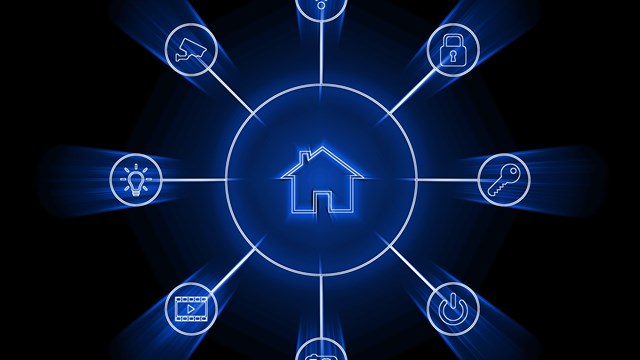Over the past 20 years, most of our country’s larger cities have become safer places than they were in previous decades. But despite these positive changes, most Americans—both urban and suburban—are acutely aware of security: how much they have, how much they’d like, and how much they really need in order to have peace of mind. For many, it’s a question of adding up the costs and benefits of a security system, and assessing the viability of the system for their particular building, community or home.
Addressing the question of how much security a building or association needs is partially a question of how much security the community in question can afford. Depending on the number of residents and their financial means, hiring a full-time security guard may be an unrealistic expense, regardless of how secure such a measure might make people feel. For a small building of 10 or so units, alternative, low-maintenance security systems that don’t include a guard would likely be a better fit.
Knowing what level of security is appropriate—and economically feasible—for one’s individual community is essential. A security system that is monitored by a security guard in the building for eight hours a day could be a smart course for some buildings, but a financial impossibility for others. To address the security needs and budgets of different buildings and associations, security companies provide options that can be tailored to work for a wide array of community models.
Types of Systems
Closed-circuit television (CCTV), key-card entry and other security technologies have been around for some time. Newer systems involving emerging technologies like biometrics are available, but according to the pros, these haven’t caught on heavily in the residential building market yet. Lock-and-key security systems remain the standard — and new state-of-the-art security technology often is based on the old lock-and-key technology.
When it comes to electronic security, there are three main types of equipment: CCTV, burglar alarm systems, and access control systems, such as those accessed with a key card or fob. These systems are often combined, or integrated, says Mark Lerner, president of New York City-based EPIC Security Corp. EPIC Security Corp. provides uniformed security guards for residential buildings and houses throughout the tri-state area.
According to Lerner, while security technology has evolved by leaps and bounds over the years, a live human being on-site is still the gold standard in security. “The best access control is to have a real doorman or security guard,” he says.
Others in the industry agree. Bob Phillips, president of Marion Security Agency in Red Bank says, “A doorman gets to know common visitors and family members and treats them as high-priority guests... A lot of the more affluent buildings like to use a doorman, because they like that kind of service.”
That said, to employ a doorman or security guard to watch a building 24/7 means 168 hours of work each week. Depending on the type of security guard employed—armed or unarmed, for example—and depending on the experience of the guard, he or she could cost anywhere from $15 to $30 per hour. That adds up fast, to the tune of about $130,000 a year, which is well out of reach of most smaller buildings and more than a few larger ones as well.
To increase security without drastically impacting a building’s budget, the use of so-called “virtual doormen” or remotely monitored electronic security systems is increasing in residential buildings. A virtual doorman system allows a property to be monitored round-the-clock for a small fee, compared to the cost of a round-the-clock doorman or security guard. An operator monitors the system through a network of TV cameras, as well as through an audio feed by which the operator can communicate with deliverymen, guests, and others visiting the building. The operator can grant access to the building to appropriate or pre-approved people, such as UPS deliveries, or visitors who are expected by a resident.
Compared to the cost of employing a security guard or doorman, virtual doorman security systems are a bargain. Such a system might only cost a few thousand dollars up-front, with a monthly maintenance fee that is based on the number of units in the building.
“Cyber doorman systems are particularly useful for people who live in brownstones, or who live in buildings without staff,” says Christopher Falkenberg, president of Manhattan-based Insite Security Inc., a security consulting firm that is also licensed in New Jersey and provides security management for companies and families.
While most companies offering virtual doorman systems charge a monthly fee, some will charge for the equipment for the system, while others will not charge up front for the equipment. Either way, the cost for the equipment is figured into the customer’s costs, Lerner says.
The basic technology that is being used for residential building security is not particularly new, but how that technology is being applied with other gadgets is new. “Card access, and how it is being integrated into security systems, is new,” says Barbara Laskin, director for New York City-based Unitone Communication Systems Inc., which also services buildings in New Jersey, most recently a new 17-story building in Jersey City. “Our installations in New Jersey—some of them are in Jersey City, some of them are in Weehawken… many obviously have the video intercom…and sophisticated alarms,” Laskin says. “More people are accepting the technology and liking it, and it’s working well,” she says.
Key cards, and key fobs, are secure and people trust them more, Laskin says. “If anybody moves, or sells the apartment, we’re able to reprogram the card,” Laskin says.
Another growing security technology is the virtual doorman system, which can also perform the concierge services of live doorman. In a virtual doorman building, if the tenant doesn’t answer, the operator answers for him, says Cristine Morettin, general manager for Manhattan-based security company Virtual Service, which offers the Virtual Doorman service. “We can allow visitors in. It also helps with lockouts—we can let residents into the building,” she says.
Power backups for the system ensure that security stays constant during blackouts. Remote monitoring of the system will not be possible if the building’s power is completely shut off and power backups fail. The systems that Virtual Service provide are easy to install and maintain, Morettin says.
After being contacted by a building’s management or board, Virtual Service installs the security system’s equipment, and operates on-call, monitoring the system round the clock. The company services buildings of every size, but the typical building it services is between 40 units and 60 units.
Strengths and Weaknesses
Many of the security systems typically used in residential buildings rely at least partly upon operators who monitor the system remotely. Operators can’t come to the scene of a problem at a building, but they will notify police or other emergency personnel if they see a problem. While many of the new computerized security systems eliminate human error and allow for greater efficiency in some ways, the technology is a double-edged sword; computer-based systems can fail from a bug or a power outage.
“Because the systems are computer-based, it makes them more user-friendly for those who are computer knowledgeable,” says Maria Gonzalez, vice-president of Fairview-based Nortronics Corp., a company that provides security integration services to residential and commercial buildings. “But the building staff has to be educated in how to use these systems.” Nortronics personnel teach building staff how to use their security system software, and how to retrieve videos, print receipts, and other tasks.
Like other security companies, Nortronics uses intercom/camera systems in its buildings that enable its operators to interact with people at the building. The company also modifies building telephone systems to allow residents to use their apartment phones as an in-building intercom.
Security technology also is being used to help residential management companies operate their buildings, Gonzalez says. Some buildings have security systems installed in their health clubs and community rooms that enable the property manager to monitor who has access to the room or club. If a resident is behind in paying her maintenance fees, her key card or fob can be deactivated by the property manager through the security system, providing a pointed incentive for the tardy to pay.
Future of Security
Most pros agree that greater user-friendliness is the future of security technology. Integration of security systems such as CCTV with intercoms and keycard systems is commonplace, but greater integration is coming, Morettin says.
“We’re seeing people fully integrating security systems with home automation. Each unit can have its own burglar alarm, and you can interact with your home’s system away from home,” Morettin says.
Consumers of building security systems should be wary of installing a system with software that’s incompatible with other systems, Gonzalez says. “You really don’t want to be tied to one provider. That’s something we push for our customers,” Gonzalez says.
Regardless of how security is handled in your building, as technology speeds up, residents are going to be given more and more, or at the very least, newer options in terms of security. Gone are the days when either you had a live doorman or you didn’t, or a lock was your only security option. Now, there are all kinds of new products to keep residents and their property more secure.
Jonathan Barnes is a freelance writer for The New Jersey Cooperator and other publications.







Leave a Comment